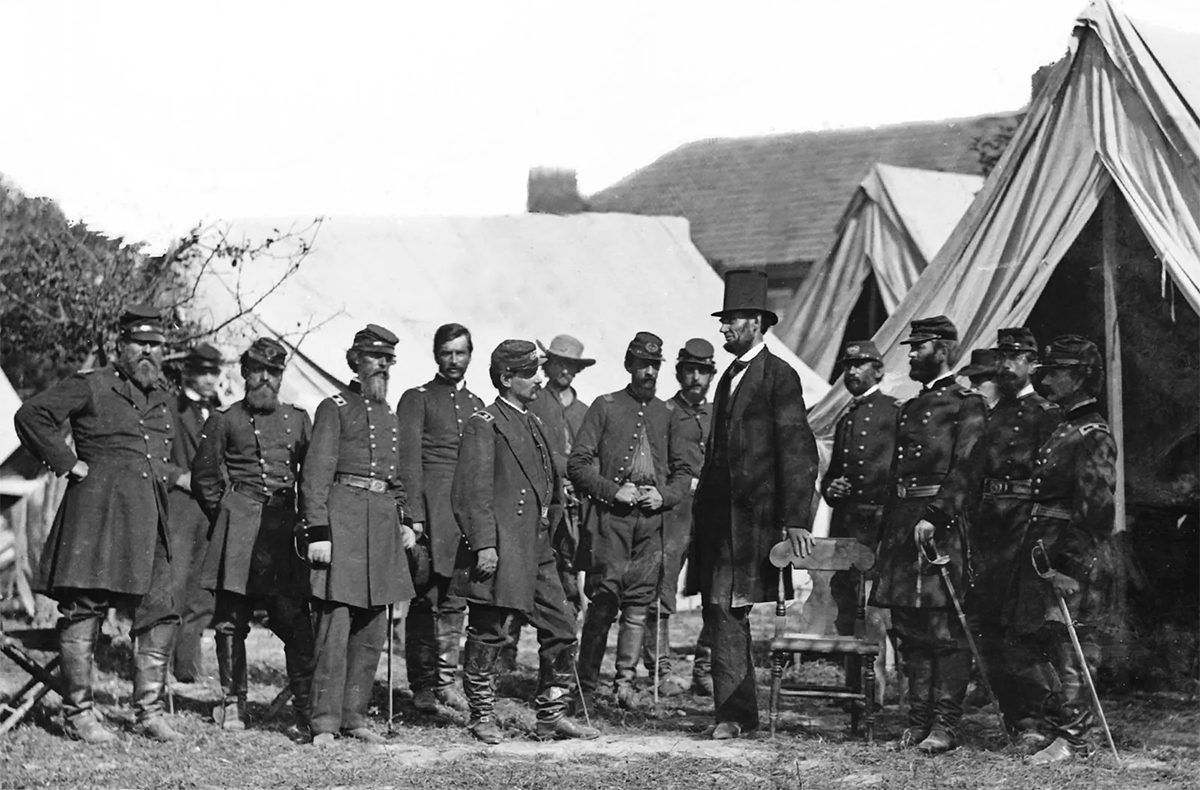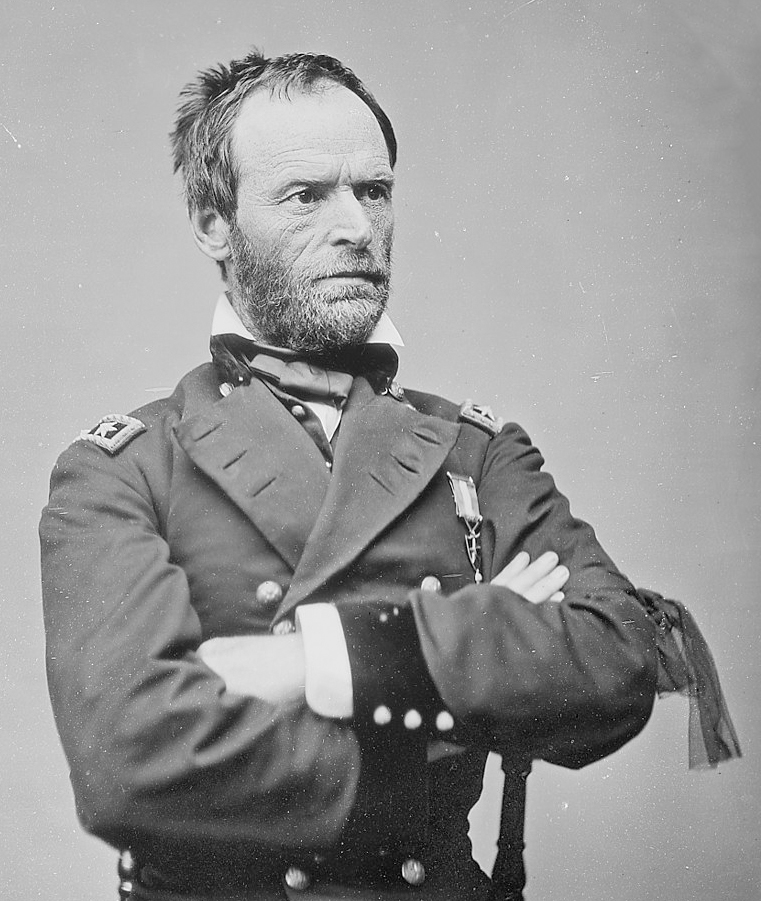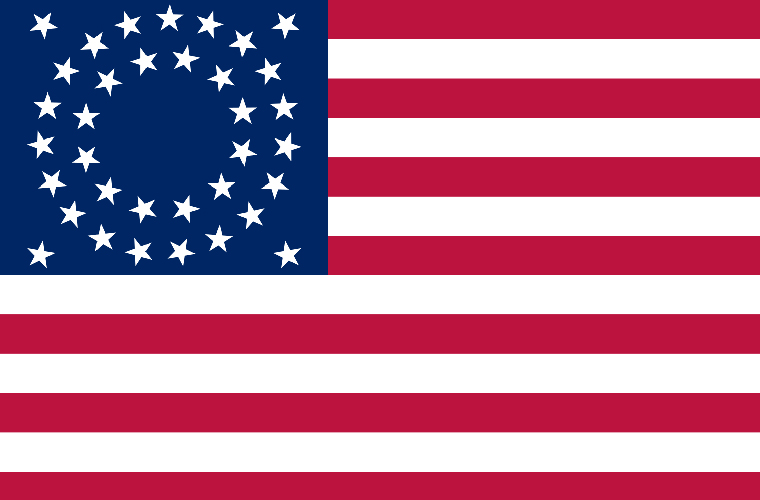The Union Army (aka the Federal Army, or Northern Army) was the army that fought for the Union (or North) during the American Civil War. Actually, it was comprised of several armies, to cover the many department’s geographic regions in which the war was fought. Union armies were named for primary bodies of water within their department; hence, the Army of the Potomac (the largest Union army), Army of the Ohio, Army of the Cumberland, Army of Tennessee, etc. These armies were comprised of U.S. regulars (professional soldiers of the regular United States Army (the Federal army), and the volunteer units supplied by the Northern and Western states and territories. At the end of the Civil War in 1865, the Union Army was victorious over the Confederate Army.
MAKE-UP OF THE UNION ARMY
The United States had always maintained a small army; the Founding Fathers feared a large army could be used by a Napoleon-like figure to overthrow the democratically elected government. In times of crisis, the various states were expected to provide volunteer militias of citizen soldiers to swell the army’s ranks until the crisis had been dealt with. Accordingly, when the Civil War broke out, the U.S. Army had only about 26,000 men, scattered from the Atlantic to the Pacific. Weakening it further, a large portion of its West Point–educated officer corps resigned to fight for their home states of the South. Likewise, the cavalry arm was predominantly composed of Southerners who left to join the armies of the Confederacy. Only the artillery saw few if any defections; this is one of the reasons that Union artillery enjoyed superiority over that of the South throughout the war.

After Fort Sumter was fired on, President Abraham Lincoln called for 75,000 ninety-day volunteers to suppress the Southern rebellion. From beginning to end, state units made up the vast majority of the army. To distinguish these amateurs from the professionals of the regular army, soldiers in the regular army wore uniforms of dark blue coats and pants; volunteers wore dark blue coats but light blue pants.
ETHNIC GROUPS IN THE UNION ARMY
Famines in Ireland and Germany had caused many citizens of those countries to immigrate to America in the two decades preceding the war. The California gold rush attracted newcomers from all parts of the globe, including the Orient. Many of these immigrants joined the Union Army; the XI Corps of the Army of the Potomac was known as “The Dutchman’s Corps” because it included so many German immigrants, but it became something of a catch-all corps for foreign-born recruits from throughout Europe and even the Mideast.
Another large group in the army were men from Ireland. There were several Irish regiments on both sides of the war, but the most famous unit was the Irish Brigade of the Army of the Potomac which was raised by Thomas Francis Meagher and originally comprised only New York regiments of Irishmen.
Around 25% of white Americans in the Union Army were foreign-born. In part, this was because most immigrants were poor; the Lincoln Administration used several drafts to get new recruits, but a man could escape the draft if he paid someone to serve in his place. Most immigrants couldn’t afford to buy their way out and were, in fact, prime candidates to serve as paid “substitutes.” In 1863, anti-draft riots broke out in New York City, starting in the Irish ghettos. They soon became the most violent riots in American history. Troops were sent with orders to kill if necessary.

Most foreign-born soldiers were from Europe, but Asians also served. Soldiers from some ethnic groups were born in America, however, including many from the native tribes. Indeed, there was a civil war within the Civil War between Indians who chose to fight for one side or the other. Initially, the military rejected black troops, but as casualties mounted and abolitionists pressed Lincoln to allow black men to serve they were finally admitted. About 200,000 served in the Union Army and Navy. Some were former slaves; others had been born freemen.
Desertion was a problem for both armies. It is estimated that some 200,000 men deserted from the Union armies during the course of the war. Some of these were “bounty jumpers” who accepted pay to serve as a substitute, then deserted, went to a different area, and offered to serve as someone else’s substitute to get paid again, repeating the scam as long as they could get away with it.
The North’s advantage in manufacturing assured more ready supplies of everything from shoes to cartridges than the Confederates received. The image of the well-dressed Union Army soldier fighting the ragged, barefoot Southerner is more than a bit romanticized, however. Campaigning wore out Northern uniforms and shoes, too, and when commanders like Ulysses S. Grant in the Vicksburg Campaign and William Tecumseh Sherman in Georgia and the Carolinas cut loose from their supply lines, Northern manufacturing capacity made little difference. Many of their soldiers marched barefoot in ragged clothes as well.
UNION ARMY CASUALTIES
Accurate numbers from this period are impossible, but estimates of Union casualties are approximately 110,000 killed in battle, 225,000 deaths from disease, and 30,000 deaths in Confederate prison camps.

